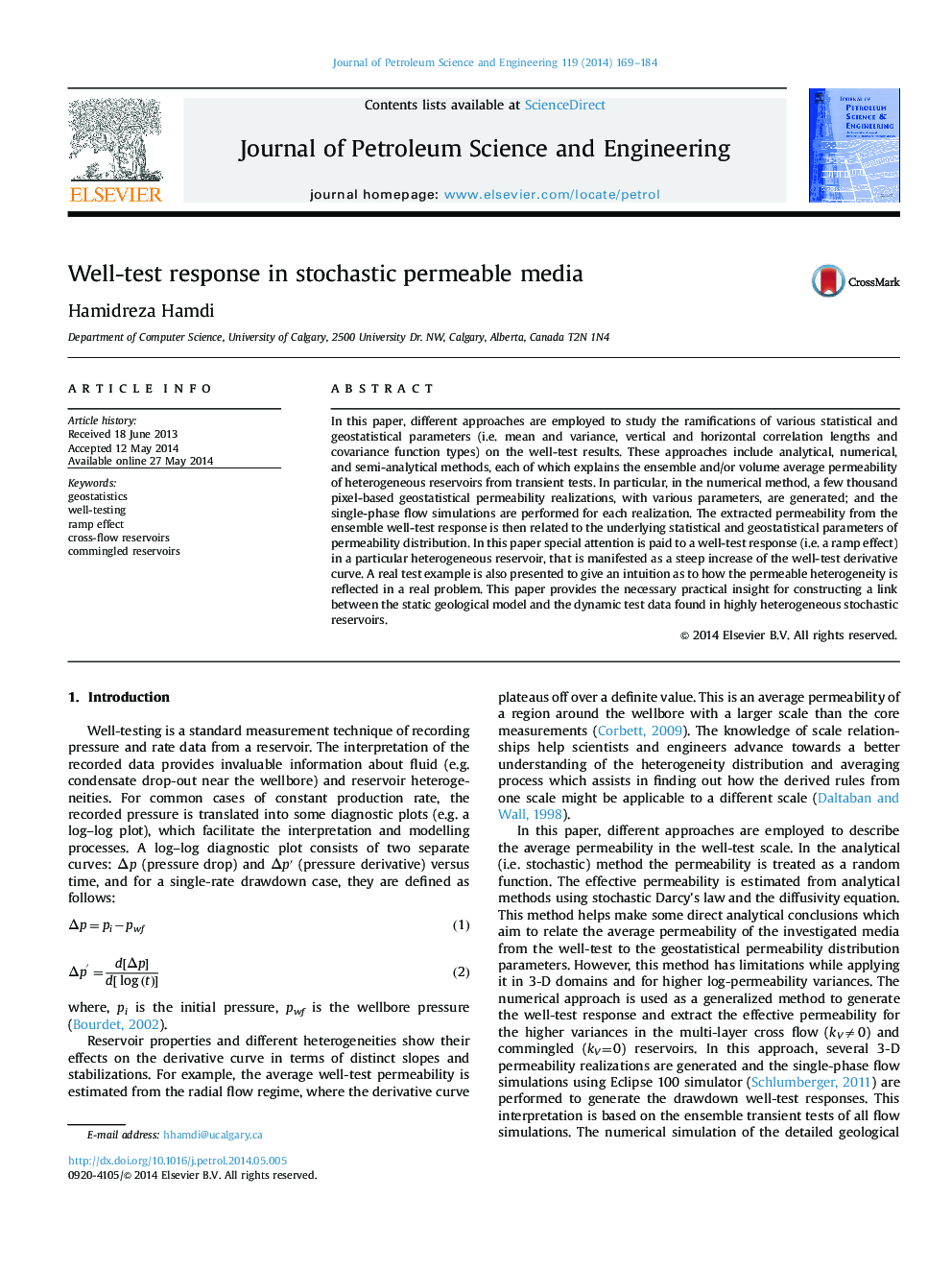| Article ID | Journal | Published Year | Pages | File Type |
|---|---|---|---|---|
| 1755118 | Journal of Petroleum Science and Engineering | 2014 | 16 Pages |
•A link between geostatistics and well test is attempted.•The effective well test permeability of stochastic medium is studied.•Vertical k, length scales, covariance and variance impact well test responses.•Ramp effect well test response is explained and a real case is presented.
In this paper, different approaches are employed to study the ramifications of various statistical and geostatistical parameters (i.e. mean and variance, vertical and horizontal correlation lengths and covariance function types) on the well-test results. These approaches include analytical, numerical, and semi-analytical methods, each of which explains the ensemble and/or volume average permeability of heterogeneous reservoirs from transient tests. In particular, in the numerical method, a few thousand pixel-based geostatistical permeability realizations, with various parameters, are generated; and the single-phase flow simulations are performed for each realization. The extracted permeability from the ensemble well-test response is then related to the underlying statistical and geostatistical parameters of permeability distribution. In this paper special attention is paid to a well-test response (i.e. a ramp effect) in a particular heterogeneous reservoir, that is manifested as a steep increase of the well-test derivative curve. A real test example is also presented to give an intuition as to how the permeable heterogeneity is reflected in a real problem. This paper provides the necessary practical insight for constructing a link between the static geological model and the dynamic test data found in highly heterogeneous stochastic reservoirs.
